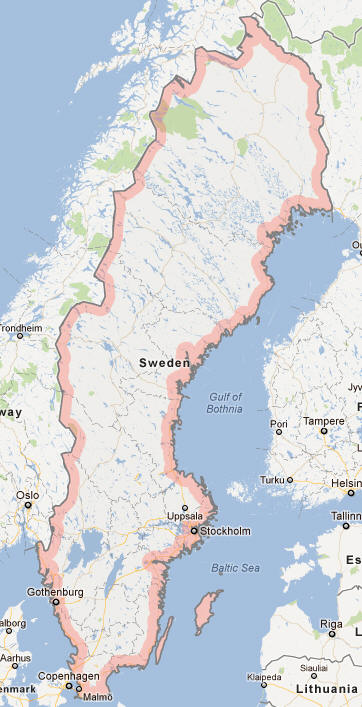Sweden Facts
Sweden, state on the Scandinavian peninsula, northern Europe; 528 447 km², of which 407 311 km² is land area, 10 230 185 residents (2019).Sweden is 1,572 km long and 499 km wide. The country is divided into 25 landscapes, 21 counties, 290 municipalities and 2,523 districts, and 13 dioceses and 1 429 parishes. The capital is Stockholm.

Country facts
- Kingdom of Sweden
- Country abbreviation: SE (S)
- Area: 407 311 km² (land area)
- Population (2019): 10,230,185 residents
- Capital: Stockholm
- Main languages: Swedish
- State: Monarchy
- Head of State: Carl XVI Gustaf (King)
- Head of Government: Stefan Löfven
- Per capita GDP (2018): US $ 54 112
- GNI per capita (2018): US $ 55,040
- Currency unit: 1 krona = 100 öre
- Currency code: SEK
- Country number (telephony): 46
- Internet domain names: see
- National Day: June 6 (Gustav Vasa’s election to king 1523 and the adoption of the 1809 form of government)
Nature
- Land use: forest (52%), agricultural land (8%), other (40%)
- Highest mountain: Kebnekaise’s southern peak (2,099 m above sea level)
- Longest river: Klarälven – Göta river (720 km)
Population
- Population density (2019): 25 residents per km²
- Natural population growth (2019): 0.2%; birth number 11 ‰, death number 9 ‰
- Age structure (2019): 0-14 years (18%), 15-64 (62%), 65- (20%)
- Average life expectancy (2019): men 81 years, women 85 years
- Infant mortality (2019): 2 per 1,000 live births
- Population forecast 2050: 13 million residents
- HDI (2017): 0.933 (place 7 of 189)
- Urbanization rate (2019): 87%
- Most populous cities (2016): Stockholm (923,516 residents in the municipality), Gothenburg (572,799), Malmö (301 706)
Business
- Industry’s contribution to GDP (2017): agriculture (2%), industry (33%), service (65%)
- Exports (2017): US $ 165,600 million
- Main export products: machinery, vehicles, paper
- Main exporting countries: Germany, Norway, Finland
- Imports (2017): US $ 153,200 million
- Main import products: workshop products, fuel, chemical products
- Main Importing Countries: Germany, Netherlands, Norway
- Railway network (2016): 14 100 km
Southern Sweden has flat or cool terrain, while from central Svealand and the north, it turns into more rugged hilly altitudes, mainly inland. To the west, a mountain chain rises to the Norwegian border. Flatter areas occur at the top of the northeast along the coast and on the Finnish grass, as well as occasional scattered plains and marsh areas in parts of northern, central and southern Norrland.
According to the constitution, Sweden is a monarchy, but the monarch has only representative functions. The main representative of the people is the Riksdag, which enacts laws, decides on the state’s income and expenditure and exercises control power. The government governs the state and is responsible for the parliament. Parliament is elected in general elections every four years.
The Swedish business sector underwent a dramatic transformation from the mid-1800s until the Second World War, when the industry gradually replaced agriculture as the dominant industry. In the mid-1960s, the peak of industrial employment was reached, as a percentage of the total employed population. Nowadays, the majority of the economically active population is employed in service industries. Service industries that have grown very strongly in recent years are various forms of stand-alone assignment activities.
Sweden Map














































